Soviet brutalist architecture: beyond the genre's striking image
Soviet brutalist architecture offers eye-catching imagery; we delve into the genre’s daring concepts and look beyond its buildings’ photogenic richness

The curious thing about Soviet brutalist architecture is that it is incredibly rich in profoundly photogenic buildings that appear simultaneously utopian in their conception and intent and distinctly dystopian in their dilapidated states of disrepair.
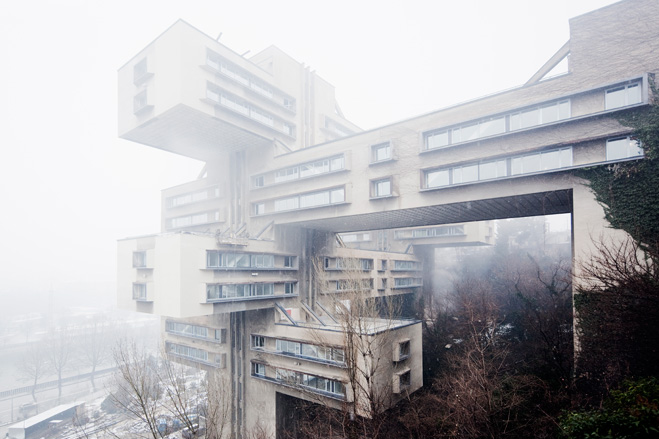
Ministry of Highways and Transportation, 1979, Tbilisi, Georgia, shot by photographer Simona Rota; as seen at the 2012 Vienna exhibition 'Soviet Modernism 1955-1991: Unknown Stories'
Soviet brutalist architecture explored
The brutalist architecture of the Soviet era has found itself fetishised in publishing and across social media and succumbing to the indignity of apparently inspiring AI to create machine hallucinations feeding off their visual vocabulary. Everything from publisher Fuel’s counterintuitively successful Soviet Bus Stops (now also a film) to massive coffee table brutalist blockbusters (the spectacular photos of Frédéric Chaubin, in particular) and their occasional appearance in the backgrounds of movies and photoshoots has created a kind of cult.
But it is based solely on the image; these remarkable buildings represent a very different moment, a late burst of optimism in socialism expressed through architecture. What, exactly, do these buildings mean? And how did they come about in such numbers and become neglected so quickly?
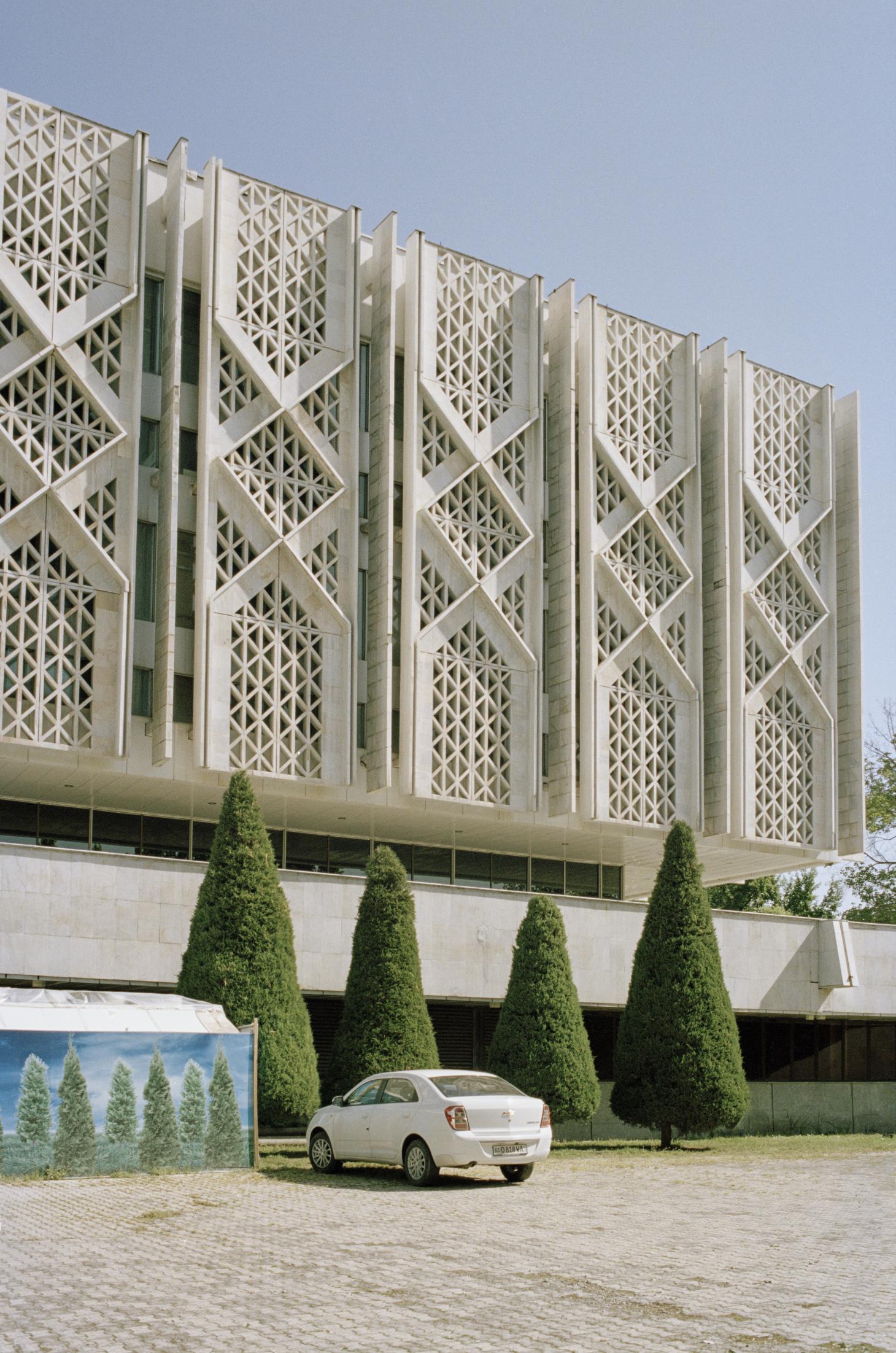
The Lenin Museum in Tashkent; shot by Stefan Giftthaler for The Trip to Tashkent story in Wallpaper* January 2020 (W* 250)
Soviet brutalism: the history
To understand a little, you need to read the rapid waves of change from the revolutionary architecture of the Constructivists in the 1920s, who managed to build only a small number of (albeit deeply influential) structures, and their repression by Stalin in the 1930s in favour of a stolid, hypertrophied classicism. That, in turn, gave way after Nikita Krushchev’s accession in 1953 to a concentration on addressing the huge Soviet housing problem, the construction of millions of units of mostly panel blocks over the following decades.
It was with Leonid Brezhnev’s coming to power in 1964 (he served as General Secretary of the Communist Party of the Soviet Union till 1982) that the focus shifted to the many, vast regions of the country with a certain loosening of central control; and they, in turn, began to express emerging modern identities through architecture. At the same time, the sci-fi era had taken hold, first with the success of Sputnik and then with widespread scientific development in everything from nuclear power to virology, a new reliance on technology and a faith in the future expressed through fiction and film. There was also, contrary to the myth of a closed society, considerable exchange between East and West, with Soviet architects being well aware of the emergence of brutalism elsewhere in Europe.
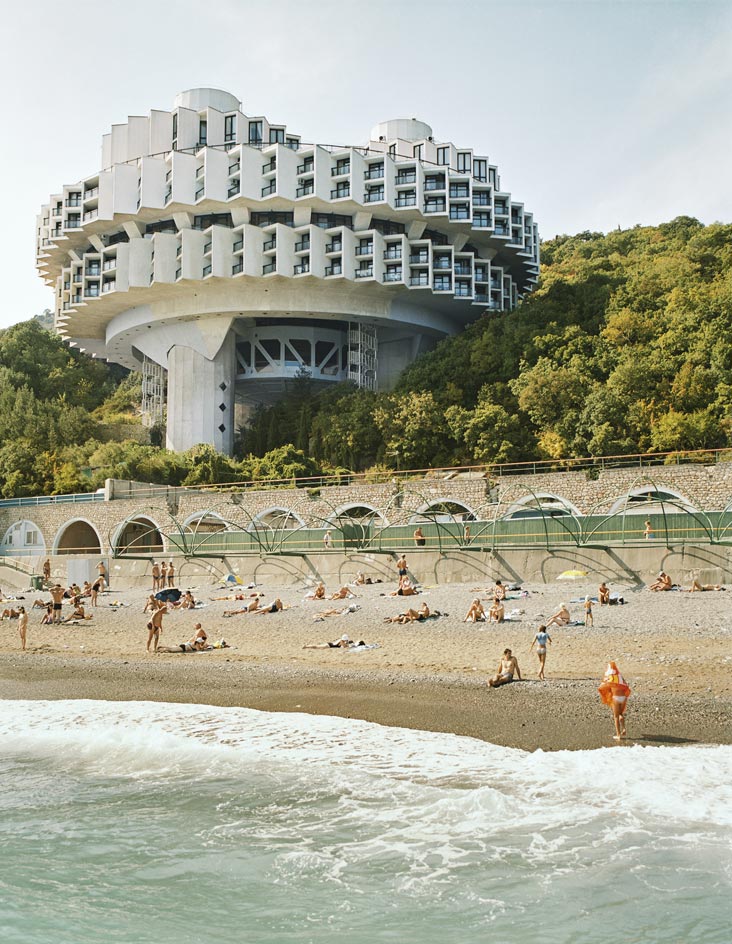
Frédéric Chaubin's fascination with late Soviet-era architecture is seen here in his 2006 photograph of the Druzhba Sanatorium, incongruous within the pastoral setting of Yalta, Ukraine; as seen in book 'Shooting Space’ by Elias Redstone
Yet the Soviets developed their own remarkable genres, using expressive, sculptural language to mould a new architecture. Some of the results have become familiar. The UFO-machine gear of the Druzhba Sanatorium overlooking the beach in Yalta (Igor Vasilevsky, 1983) was so odd that the Pentagon mistook it for a new rocket launch pad. It now adorns the covers of dozens of brutalist books and regularly pops up in Instagram feeds. And the Ministry of Highway Construction in Tbilisi (George Chakhava, 1975) is an 18-storey series of interlocking blocks that can look bizarrely contemporary, even though it was completed half a century ago.
Another UFO landed in a street in Kyiv in the form of the Ukrainian Institute of Scientific and Technological Research and Development (Lev Novikov and Florian Turiev, 1971). Then there is the Polytechnic Institute of Minsk in Belarus (Igor Esman and Viktor Anikin, 1983), a space-age battleship of a building with what looks like ski slopes. These experiments illustrate the efforts across the Socialist republics to develop their own aesthetic identities.
Receive our daily digest of inspiration, escapism and design stories from around the world direct to your inbox.
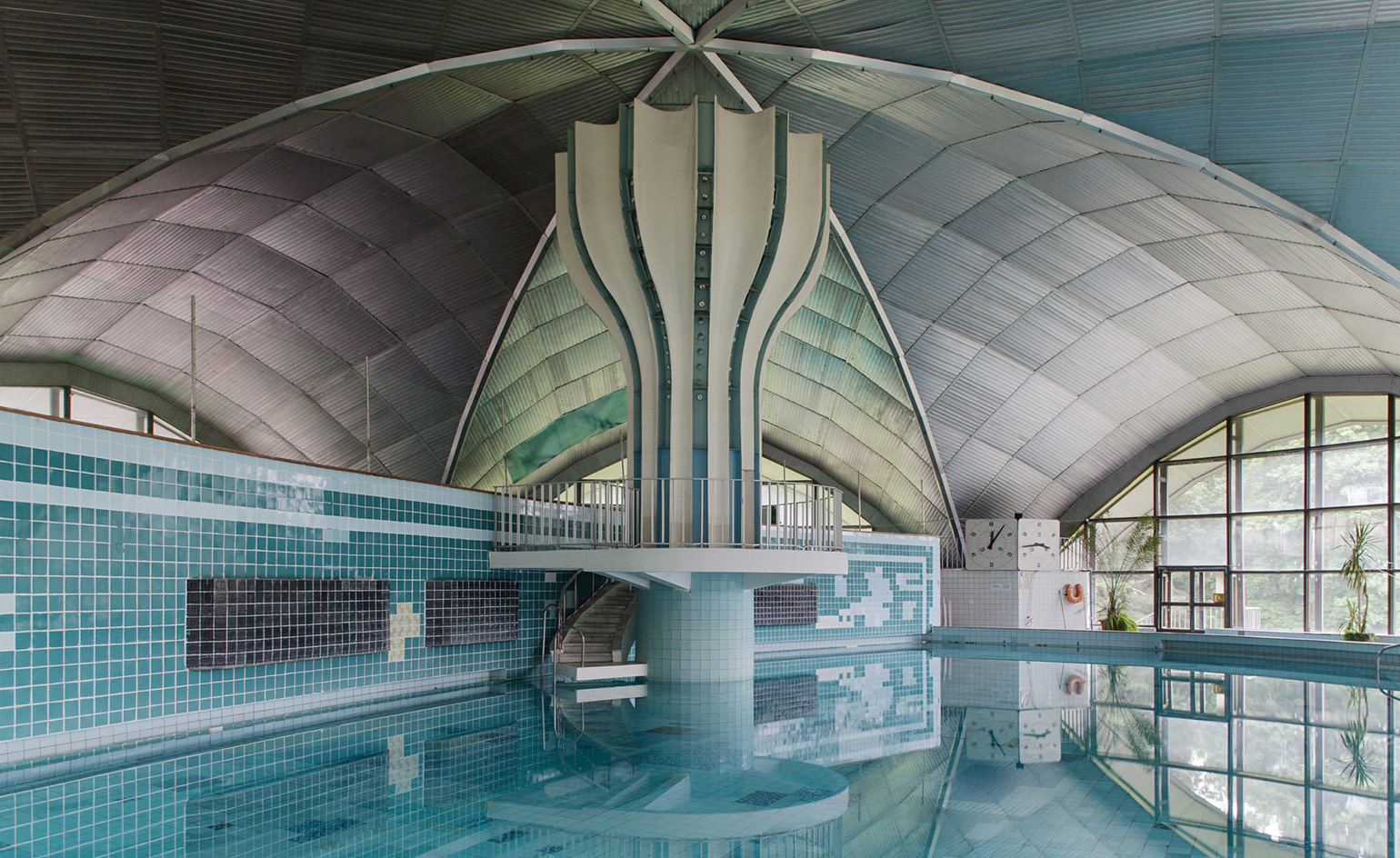
Klyazma sanatorium, built in 1963 around the Klyazminsky Reservoir on the outskirts of Moscow; from the book Holidays in Soviet Sanatoriums
This was also often done through the invention of wholly new building types, socialist equivalents to the cathedrals of the past. There were wedding palaces such as Tbilisi’s castle-like Palace of Ceremonies (Victor Djorbenadze, 1984) and funerary centres like the same architect's Mukhatgverdi Ceremonial Hall (also Tbilisi, 1974, and now itself looking more than a little corpse-like) and the strange, haunting Park of Memory in Kyiv (Avraam Miletskyi, Volodomyr Melnychnko and Ada Rybachuk, 1980).
Then there was a raft of memorials: powerful, theatrical gestures glorifying Soviet efforts in war, in space, in science or in ‘friendship’ with many other nations. There were also circuses (and circuses were very big in the USSR), tributes to tents reimagined in massive concrete, ‘Palaces of the Republic’, ‘Palaces of Sports’ and ‘Palaces of Lenin’, in fact, palaces for the people everywhere.
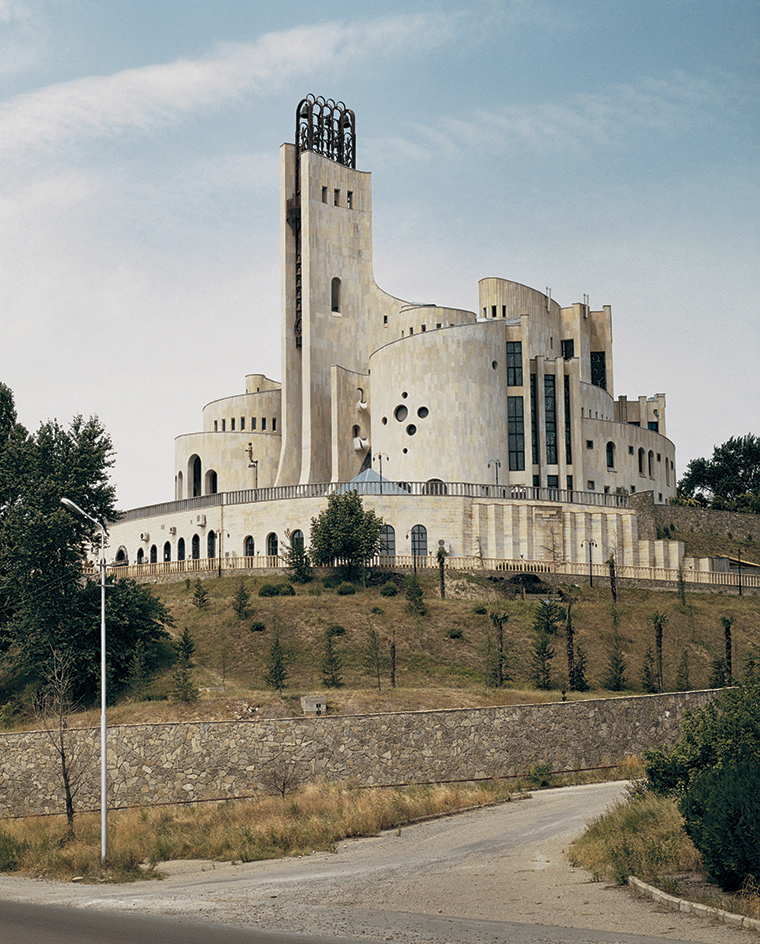
Palace of Ceremonies in Tbilisi
Some of these proletarian palaces also began to display intriguing inflexions, uncharacteristic of Western brutalism. The Peoples’ Friendship Palace in Tashkent (Yevgeny Rozanov, 1981) has hints of Islamic architecture, for instance; the Exhibition Hall of the Uzbek Union of Artists in the same city (R Khayrutdinov and F Tursunov, 1974), yet more so, with ogee arches and a façade like a carpet.
The expansion of holiday provision created yet more opportunities for architectural expression. The gorgeous cantilevered extension of the Union of Writers summer resort in Sevan (Gevorg Kochar, 1969) is an old favourite and the once derelict and now chi-chi Baltic Beach Hotel in Jurmala, Latvia (Normunds Pavārs, Viktors Valgums and Modris Ģelzis, 1981), with its staggered levels like a liner, remains remarkable.
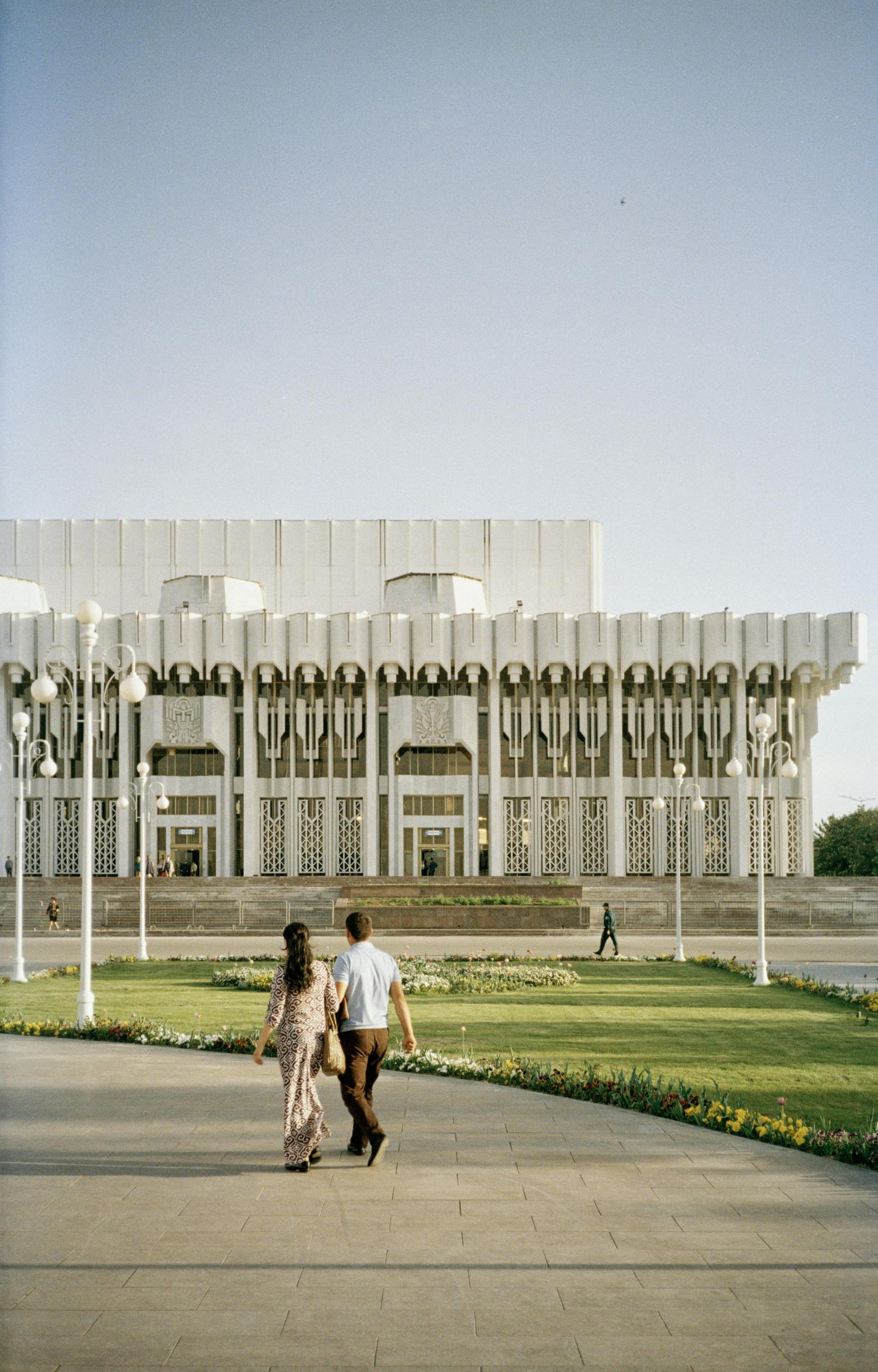
The Peoples’ Friendship Palace, as seen in The Trip to Tashkent story in Wallpaper* January 2020 (W* 250)
Although the republics were keen to use architecture to express their burgeoning identities within the USSR, there was plenty going on in Moscow and the rest of Russia too, much of it dedicated to celebrating science, the atheist state’s religion. The astonishing bulk of the Atomic Engineers’ Building acts like a scientific city wall and the Russian State Scientific Centre for Robotics and Cybernetics (Boris Artyushin and Stanislav Savin, 1986) was a true cathedral of science, designed in the early 1970s but only completed a few years before the regime ran out of cash and Gorbachev ended it all. The slow pace of Soviet construction, a shortage of materials and labour and not a little corruption meant that brutalism flourished later here than it did elsewhere, well into the 1980s.
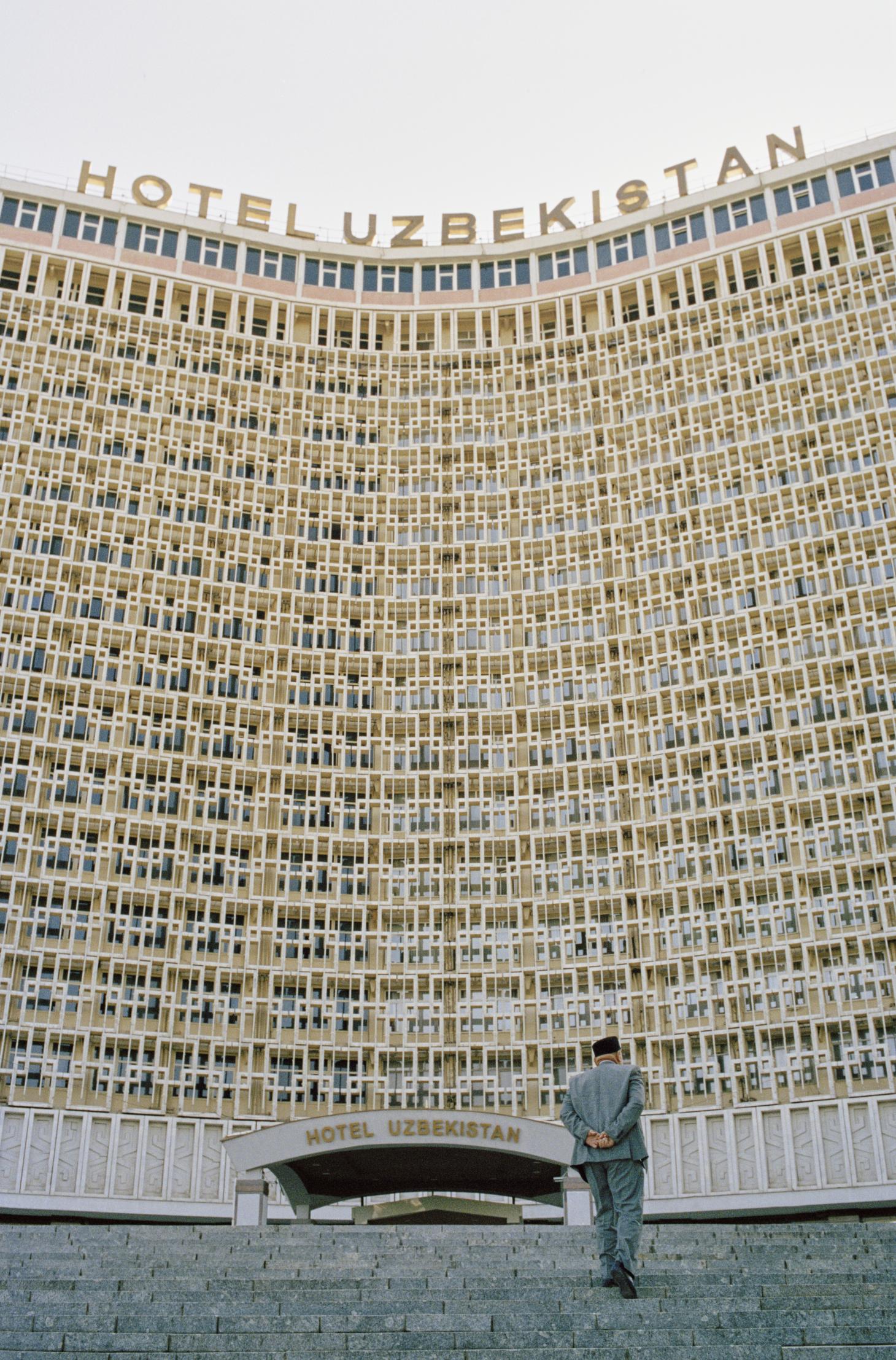
The 1974 Hotel Uzbekistan, designed by Ilya Merport, L Yershova and V Rashchupkin, with a curved façade based on the ornate lattices of Islamic architecture; also from Wallpaper’s trip to Tashkent
These sculptural spectacles, most of which survive in varying states of decay, bridged the visionary experiments of Constructivism with the more modern statement buildings used to build regional and metropolitan identity. From the most modest of bus stops to the most grandiose megablocks, they remain the representatives of a remarkable moment in which architecture’s capacity to define a place and accommodate genuine public participation was taken seriously. Many of the finest examples remain in a precarious position, crumbling and unloved, despite their global appeal and now is the time to save them.
Edwin Heathcote is the Architecture and Design Critic of The Financial Times. He is the author of about a dozen books including, most recently 'On the Street: In-Between Architecture'. He is the founder of online design writing archive readingdesign.org and the Keeper of Meaning at The Cosmic House.
-
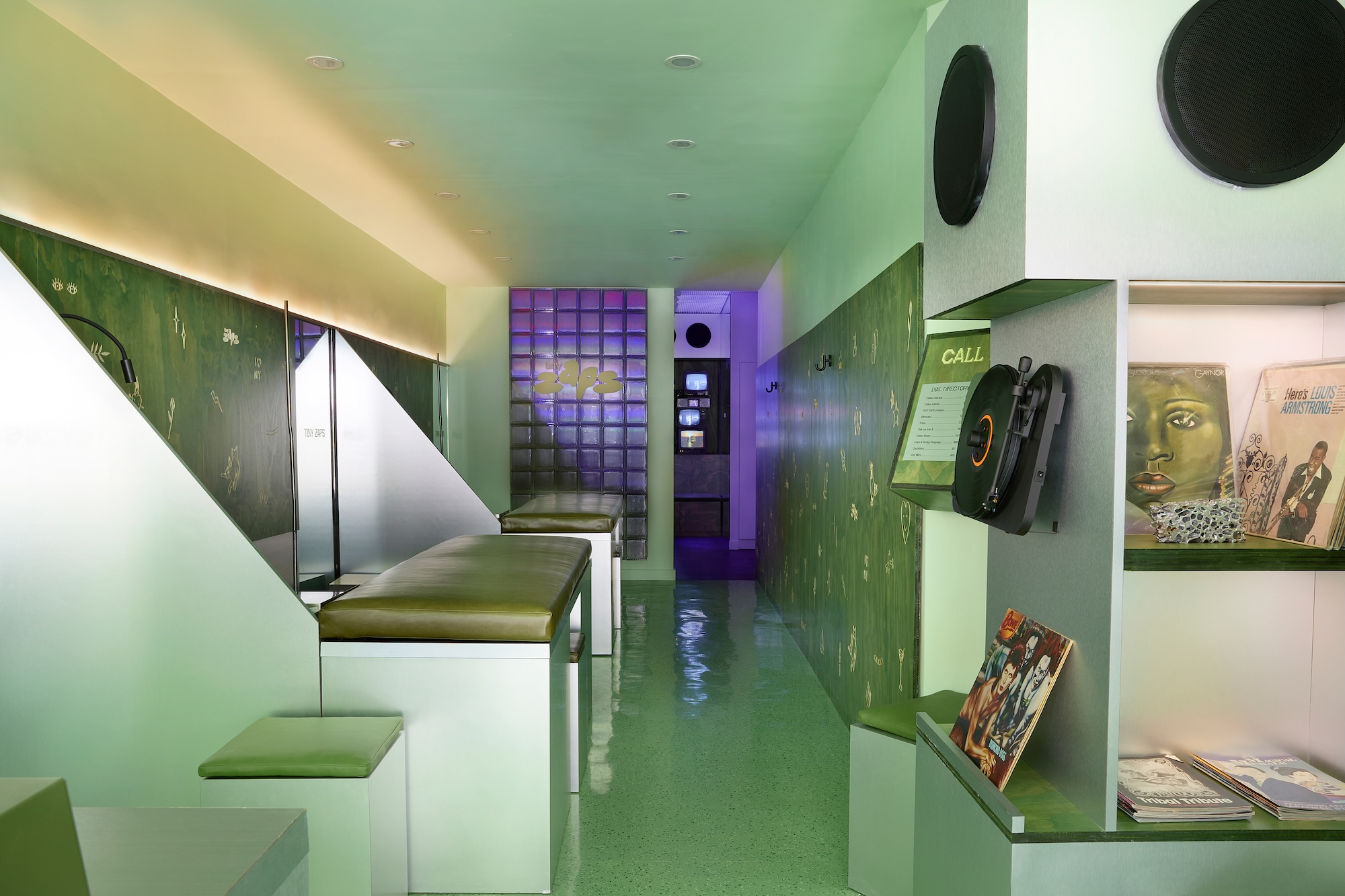 Terrified to get inked? This inviting Brooklyn tattoo parlour is for people who are 'a little bit nervous'
Terrified to get inked? This inviting Brooklyn tattoo parlour is for people who are 'a little bit nervous'With minty-green walls and an option to 'call mom', Tiny Zaps' Williamsburg location was designed to tame jitters
-
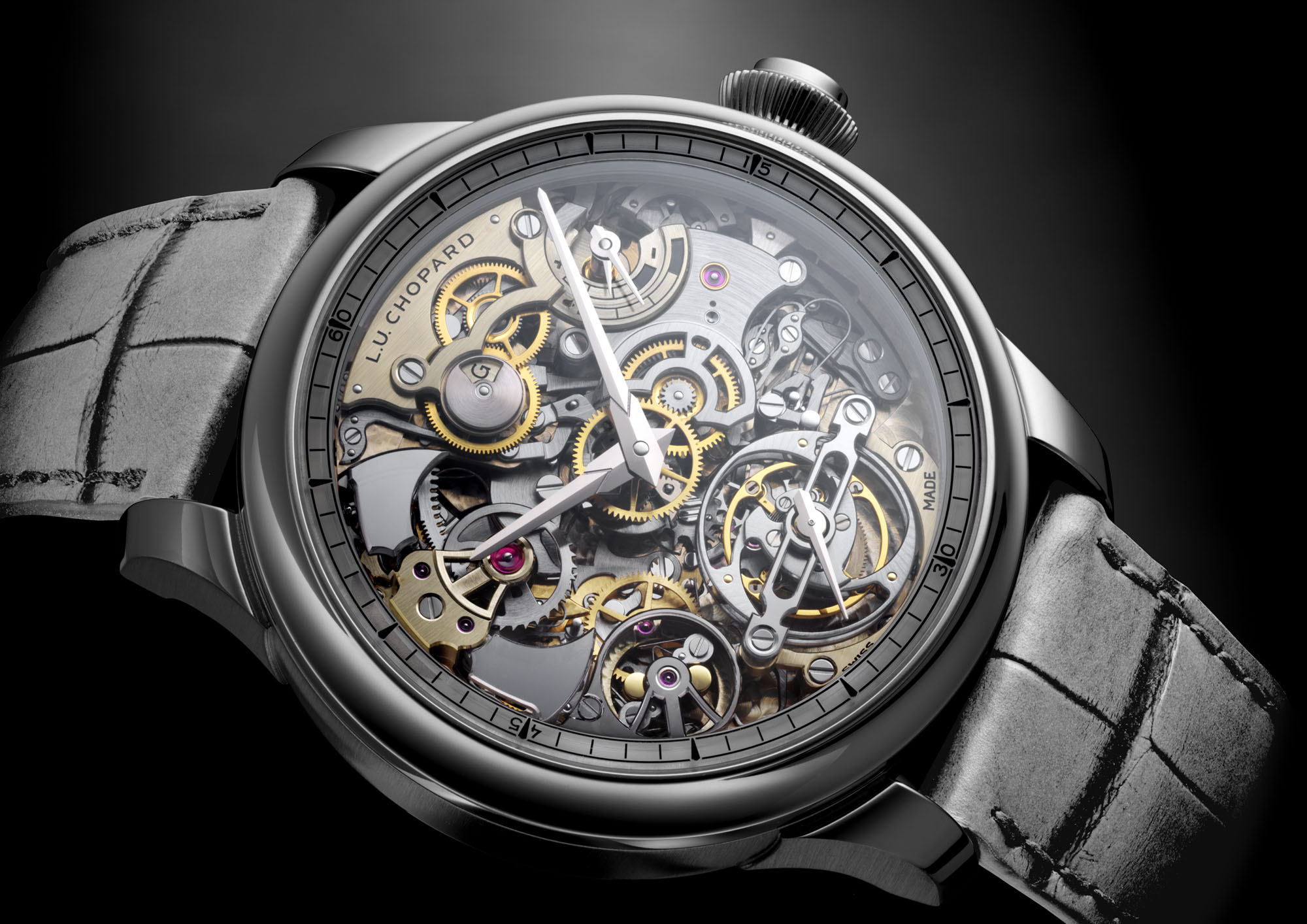 Let’s hear it for the Chopard L.U.C Grand Strike chiming watch
Let’s hear it for the Chopard L.U.C Grand Strike chiming watchThe Swiss watchmaker’s most complicated timepiece to date features an innovative approach to producing a crystal-clear sound
-
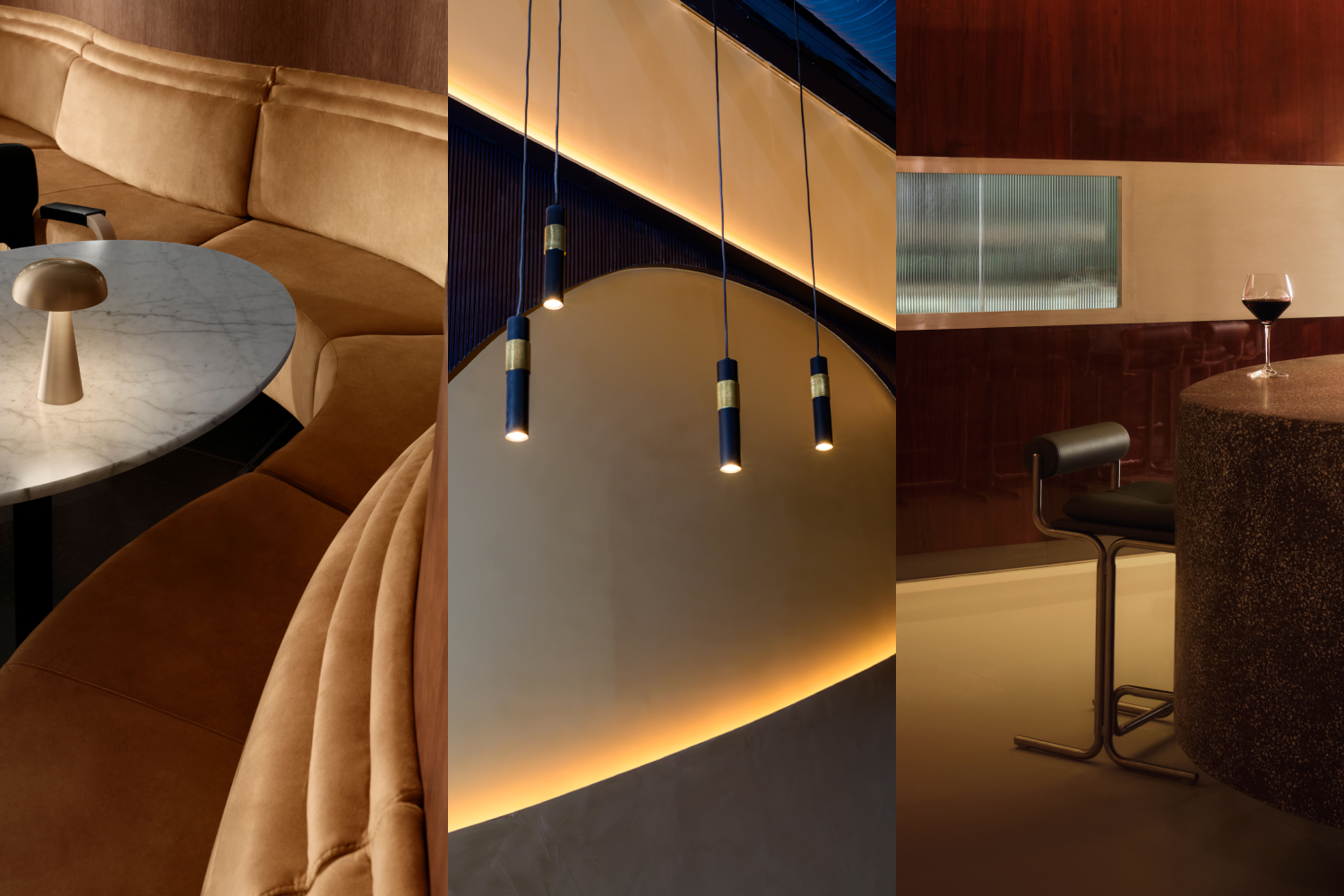 Form... and flavour? The best design-led restaurant debuts of 2025
Form... and flavour? The best design-led restaurant debuts of 2025A Wallpaper* edit of the restaurant interiors that shaped how we ate, gathered and lingered this year
-
 In addition to brutalist buildings, Alison Smithson designed some of the most creative Christmas cards we've seen
In addition to brutalist buildings, Alison Smithson designed some of the most creative Christmas cards we've seenThe architect’s collection of season’s greetings is on show at the Roca London Gallery, just in time for the holidays
-
 The Architecture Edit: Wallpaper’s houses of the month
The Architecture Edit: Wallpaper’s houses of the monthFrom wineries-turned-music studios to fire-resistant holiday homes, these are the properties that have most impressed the Wallpaper* editors this month
-
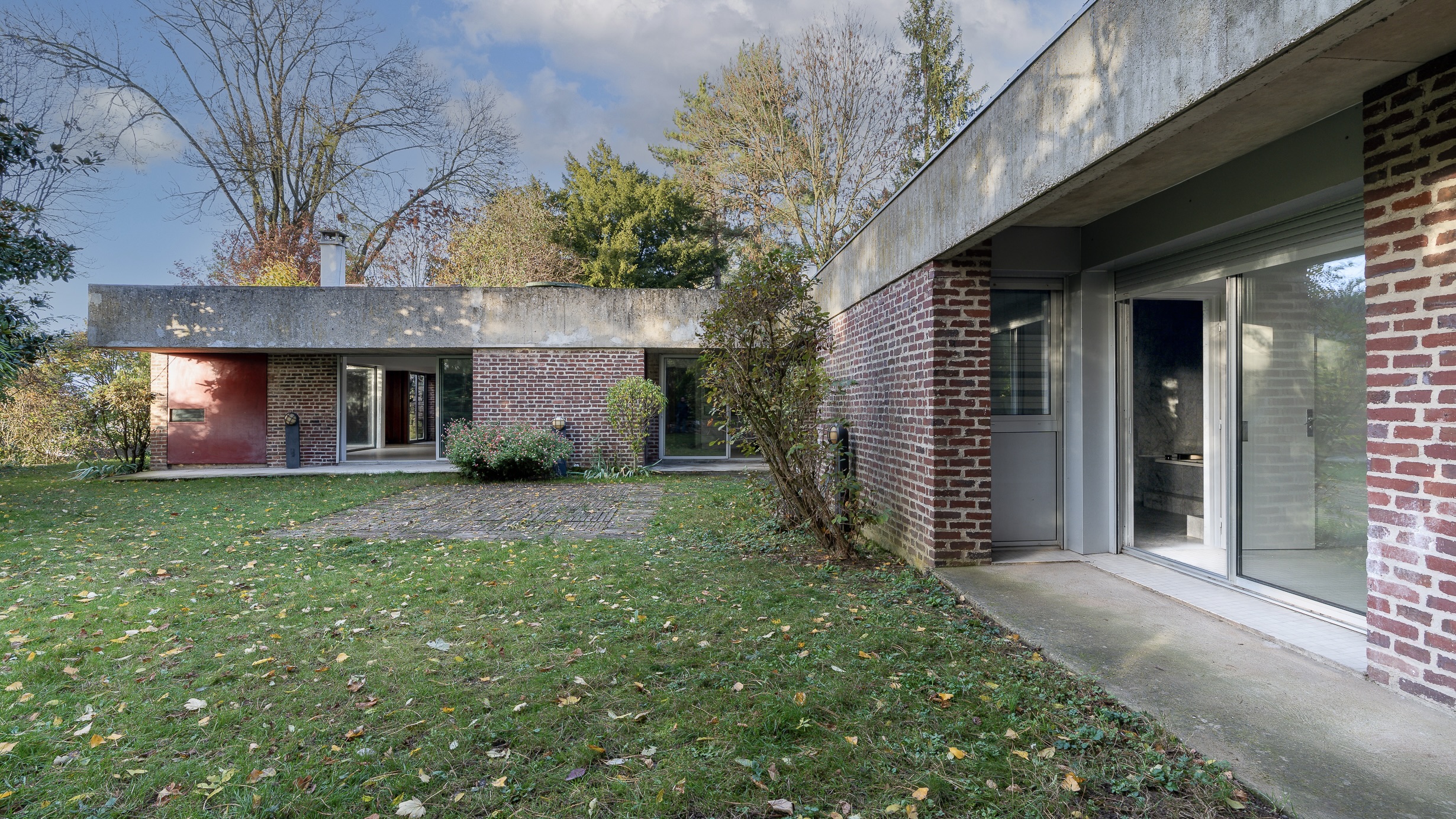 This modernist home, designed by a disciple of Le Corbusier, is on the market
This modernist home, designed by a disciple of Le Corbusier, is on the marketAndré Wogenscky was a long-time collaborator and chief assistant of Le Corbusier; he built this home, a case study for post-war modernism, in 1957
-
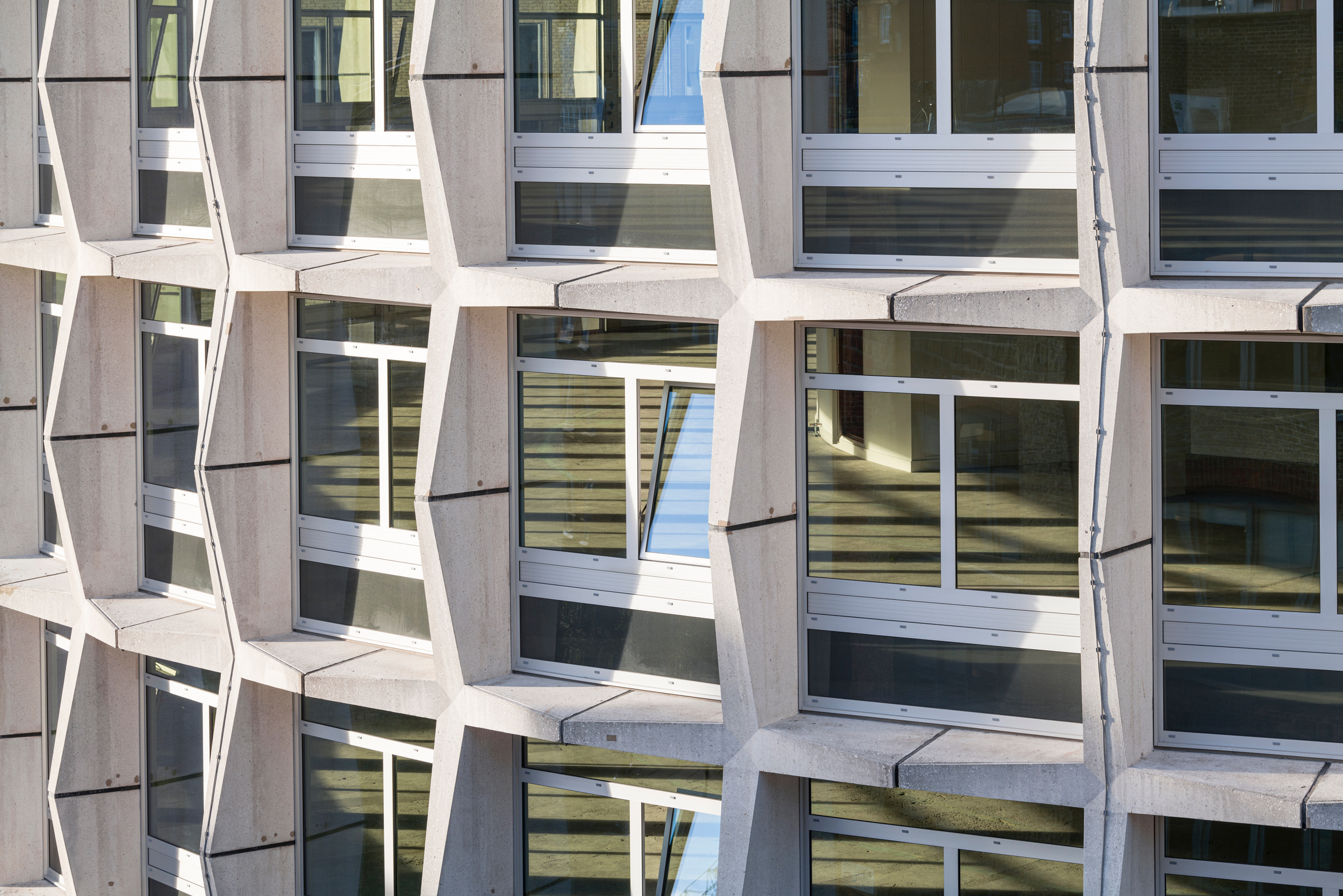 Richard Seifert's London: 'Urban, modern and bombastically brutalist'
Richard Seifert's London: 'Urban, modern and bombastically brutalist'London is full of Richard Seifert buildings, sprinkled with the 20th-century architect's magic and uncompromising style; here, we explore his prolific and, at times, controversial career
-
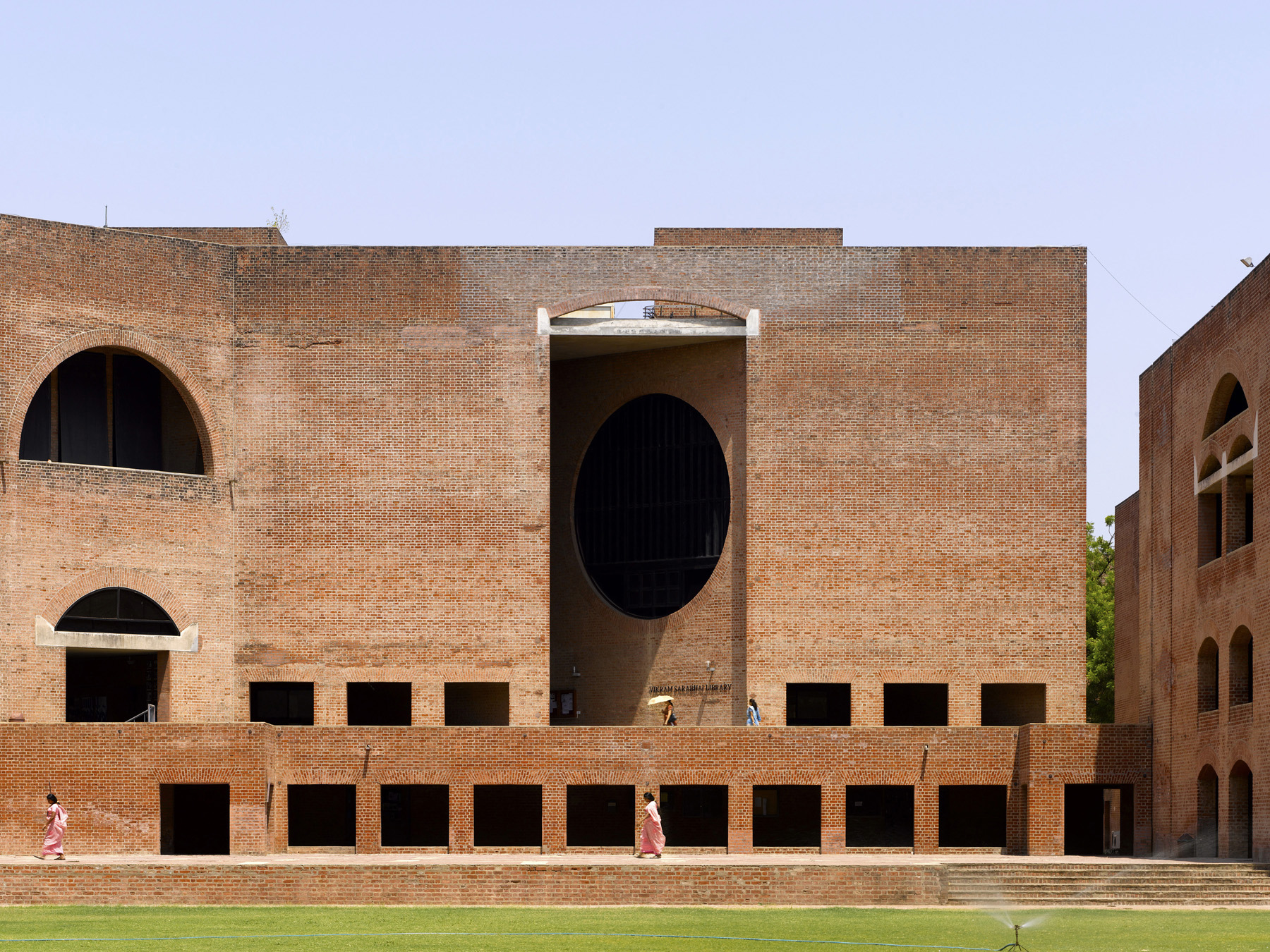 Louis Kahn, the modernist architect and the man behind the myth
Louis Kahn, the modernist architect and the man behind the mythWe chart the life and work of Louis Kahn, one of the 20th century’s most prominent modernists and a revered professional; yet his personal life meant he was also an architectural enigma
-
 The Architecture Edit: Wallpaper’s houses of the month
The Architecture Edit: Wallpaper’s houses of the monthFrom Malibu beach pads to cosy cabins blanketed in snow, Wallpaper* has featured some incredible homes this month. We profile our favourites below
-
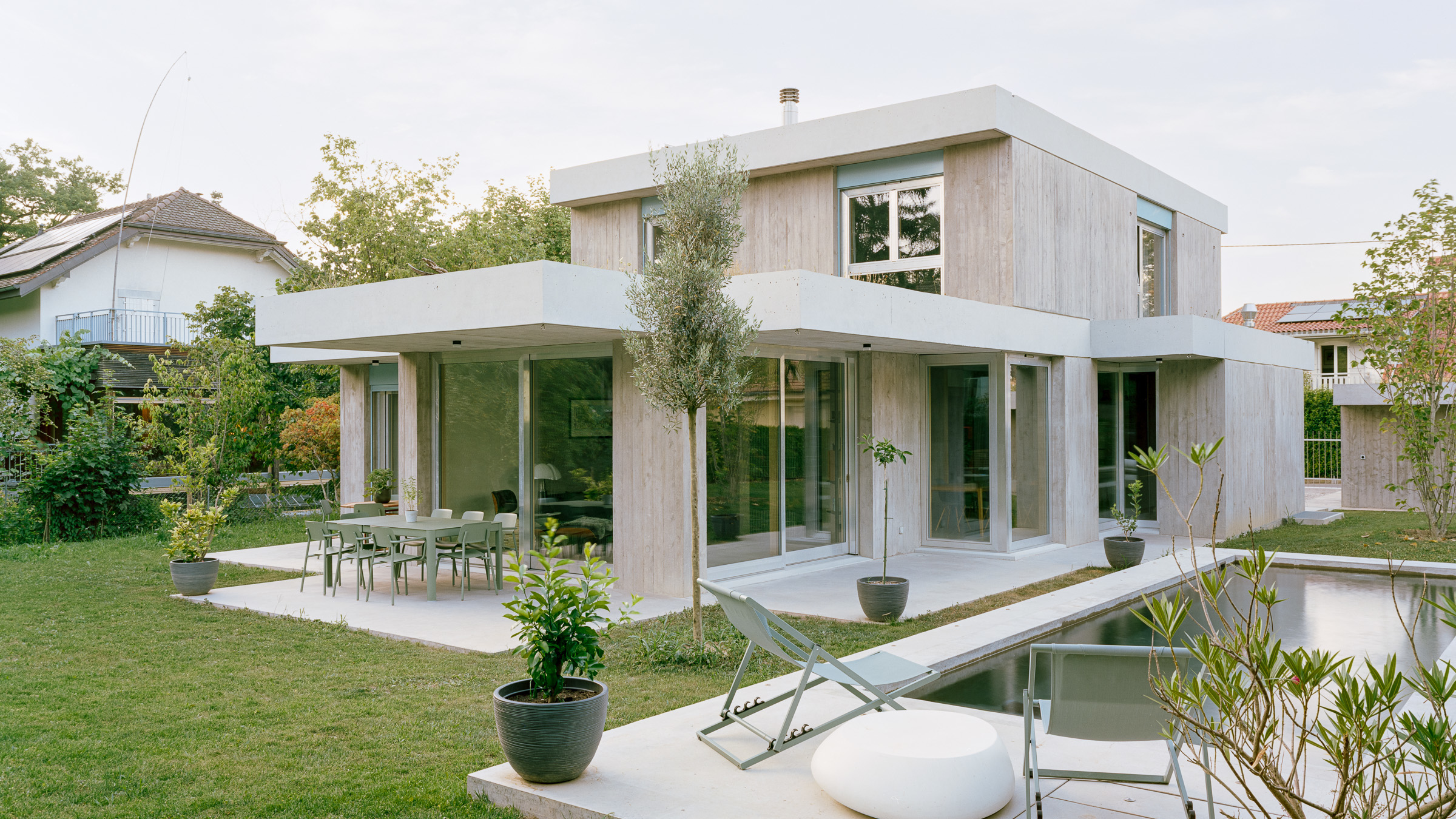 A neo-brutalist villa for an extended family elevates a Geneva suburb
A neo-brutalist villa for an extended family elevates a Geneva suburbLacroix Chessex Architectes pair cost-conscious concrete construction with rigorous details and spatial playfulness in this new villa near Geneva
-
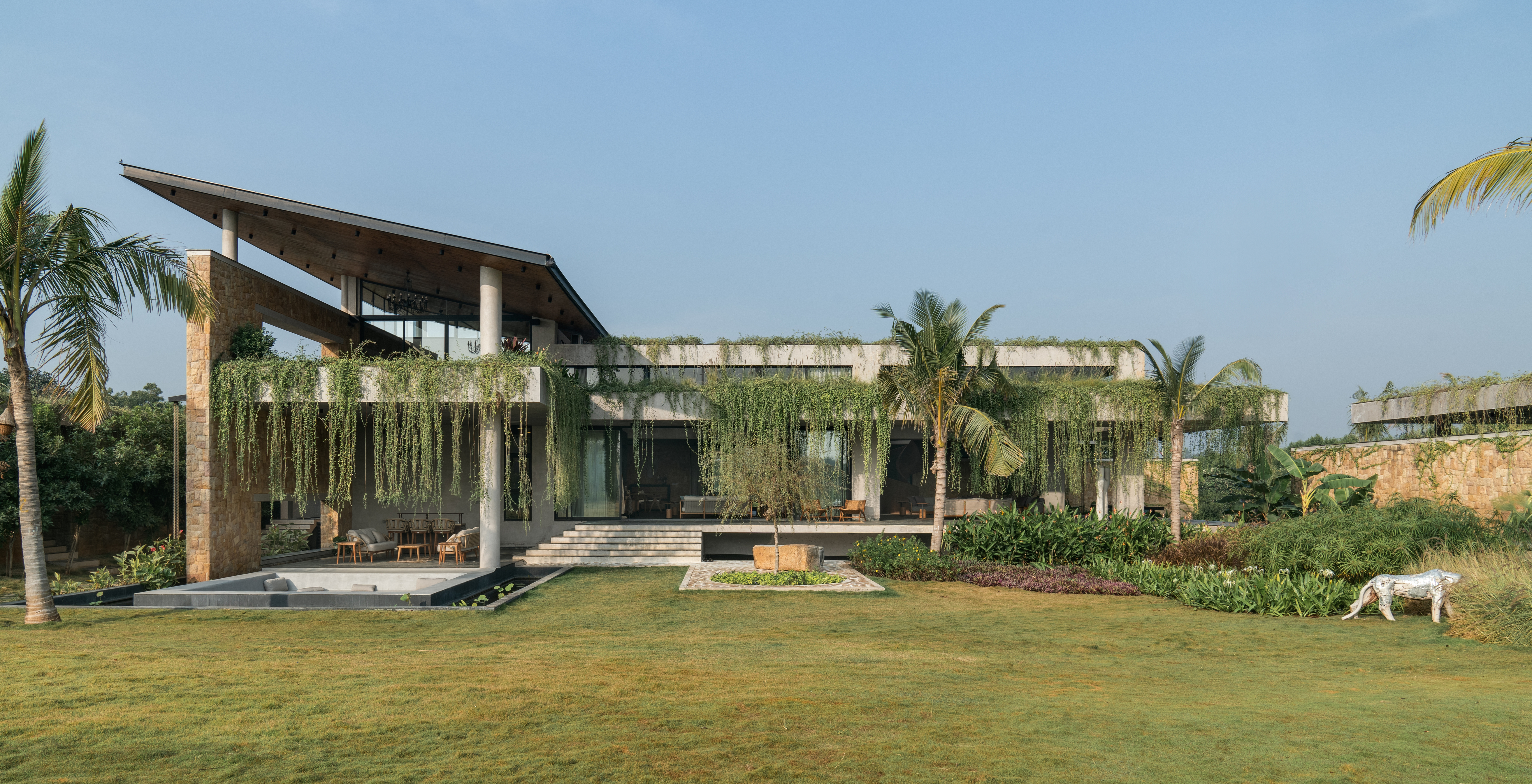 Cascading greenery softens the brutalist façade of this Hyderabad home
Cascading greenery softens the brutalist façade of this Hyderabad homeThe monolithic shell of this home evokes a familiar brutalist narrative, but designer 23 Degrees Design Shift softens the aesthetic by shrouding Antriya in lush planting